Site Links
Howdy, Stranger!
It looks like you're new here. If you want to get involved, click one of these buttons!
Quick Links
Categories
In this Discussion
Who's Online (0)
Inductor Cores: air vs powdered iron vs laminated iron vs toroidal iron
Based on that most recent Purifi tech note and needing to EQ dipole woofers at 6dB per octave I am considering (crosses himself) adding a series inductor to my woofer section (no other passive components). I have worked out that I need about a 3.3uH inductor, and low series resistance is very important so 15 gauge or larger wire only.
Based on my recollection, air core is the best in terms of the best hysteresis distortion performance. This would run me about $50 ish per inductor.
PE sells Jantzen powdered iron core inductors. IIRC these are almost as good as air core. The cost is about $25 each.
While we are on the subject, how do laminated and toroidal iron core inductors compare to the above types in terms of distortion performance?
I will not need to adjust (wind unwind turns) the inductance value.

Comments
I forget where I saw this and can't find the reference, but in the last couple of years someone did a test and measured distortion and power handling (IIRC).
Air Core = best
Laminate = pretty darn good until approaching power handling limit
Powdered core: way not good. Stay away. High distortion at nearly all power levels.
I'm sure many more peeps here will chime in!
I remember the powder iron as bad also. I think the solid iron core was was poor too. I have the article somewhere at home.
I remember reading that article. IIRC air core was the best (sans the DCR) and the iron laminate core was just fine until it saturated, which was at pretty high current levels (like pro-sound levels). Yeah, powdered core like the Jantzens P-cores were pretty bad as far as the measurements went.
Not the previously mentioned article, but some valid measured data here:
https://hificompass.com/en/projects/experiment/test-couple-iron-core-inductors
That was a good read. I am glad I posted here about this, since I was mistaken about the powdered core type.
Arliss (Lowell) gifted me a pair of Jantzen foil inductors (0.15 mH). I haven't used them yet as I haven't needed that exact inductance value. They have very low DCR, 0.09 ohms. Hoping to use them in a build with some really nice tweeters (ie Viawave, Morel Supremes, etc.). I would think being air cores and having low DCR they would be awesome except for their cost.
I have often wondered if the foil inductors have capacitance? Could you read them with DATS or an lcr?
That's a capacitor with inductance. I might have to buy some and do some testing. If your readings are accurate this is a big problem for many circuits.
I'll give mine a measure with my DATs and report back.
Here ya go.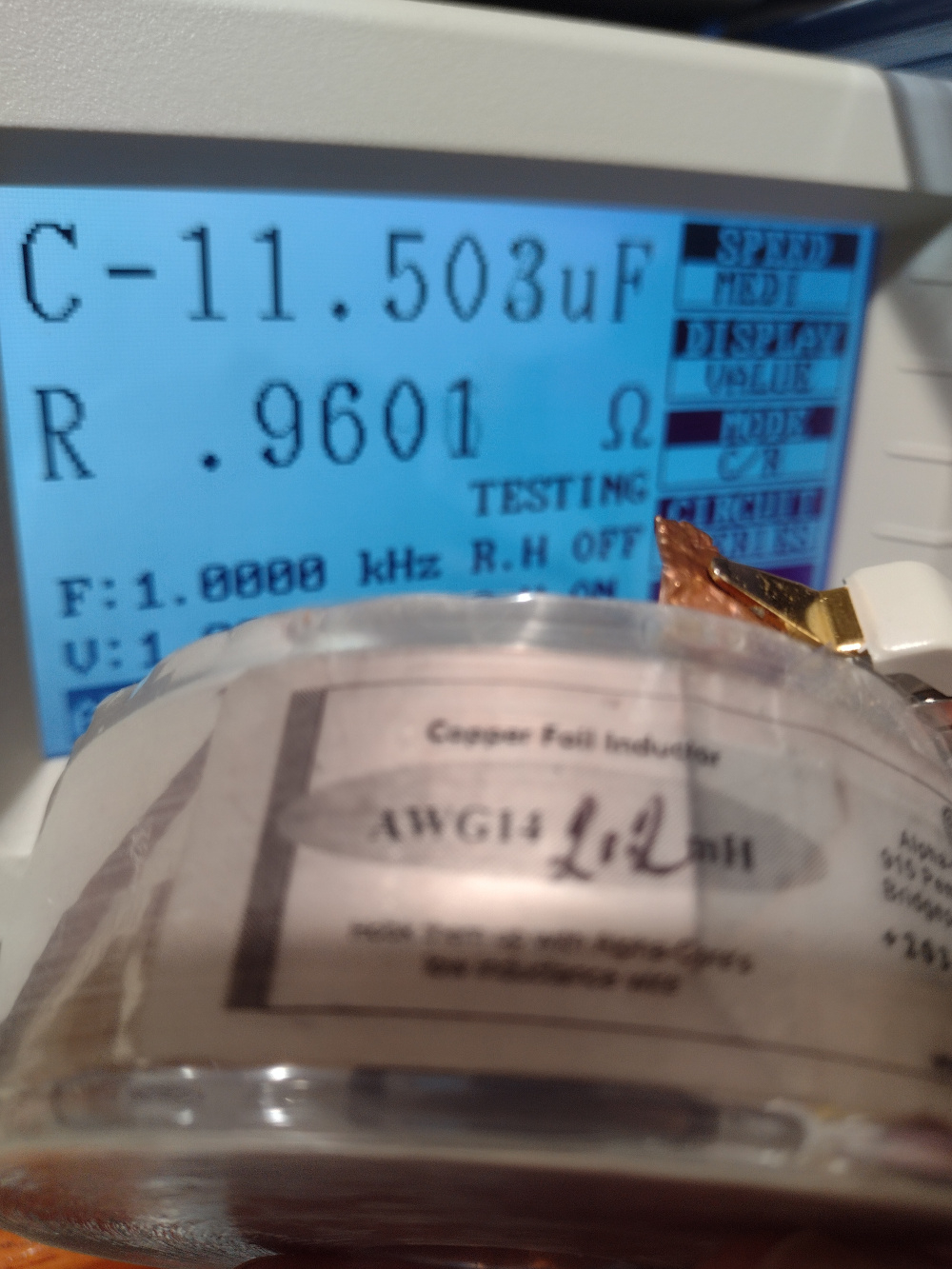
Lol. I read somewhere they did have capacitance.
https://www.jfcomponents.com/
Now we know who has the nicest LCR. 😜
That is not a small amount of capacitance. Obviously this inductor is built LIKE a capacitor, but does it behave the same in circuit?
I could see how having a capductor (trade mark Ken Rhodes you can't use it) could be useful but matching both values in one component would be REALLY hard to do.
All this info and I only have more questions.
Some claim an iron core inductor can store energy, which will _obviously _smear the sound. I wonder if they have ever tested that claim or if they are judging with their ears?
Energy storage is just a layman's term for hysteresis. All ferrite core will have some hysteresis, even speaker motor.
Nick, do you have a "standard" 2.2mH coil to measure?
I'm sure that I have something close. I'll test it when I get home.
Sorry Nick, didn't mean to get you homework. 😂
Eric's just so demanding.
Nice to have a control.
...and to have control ....MUAHHHHHHAHAHAH!!!🔥😈🔥
When what you need are Minions, oh wait....
InDIYana Event Website
BANANA!!!!
At 1khz like the foil inductor.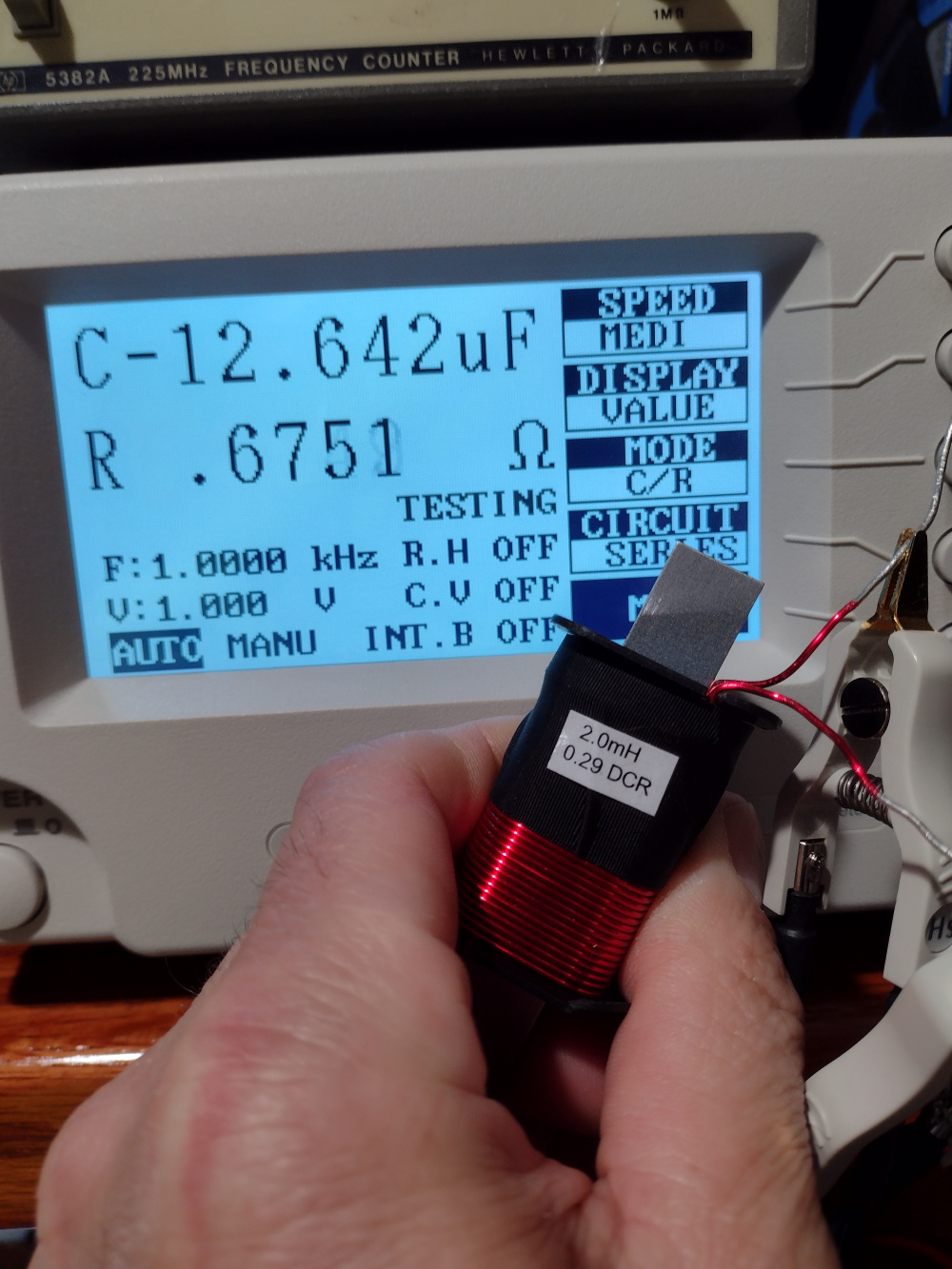
10 khz
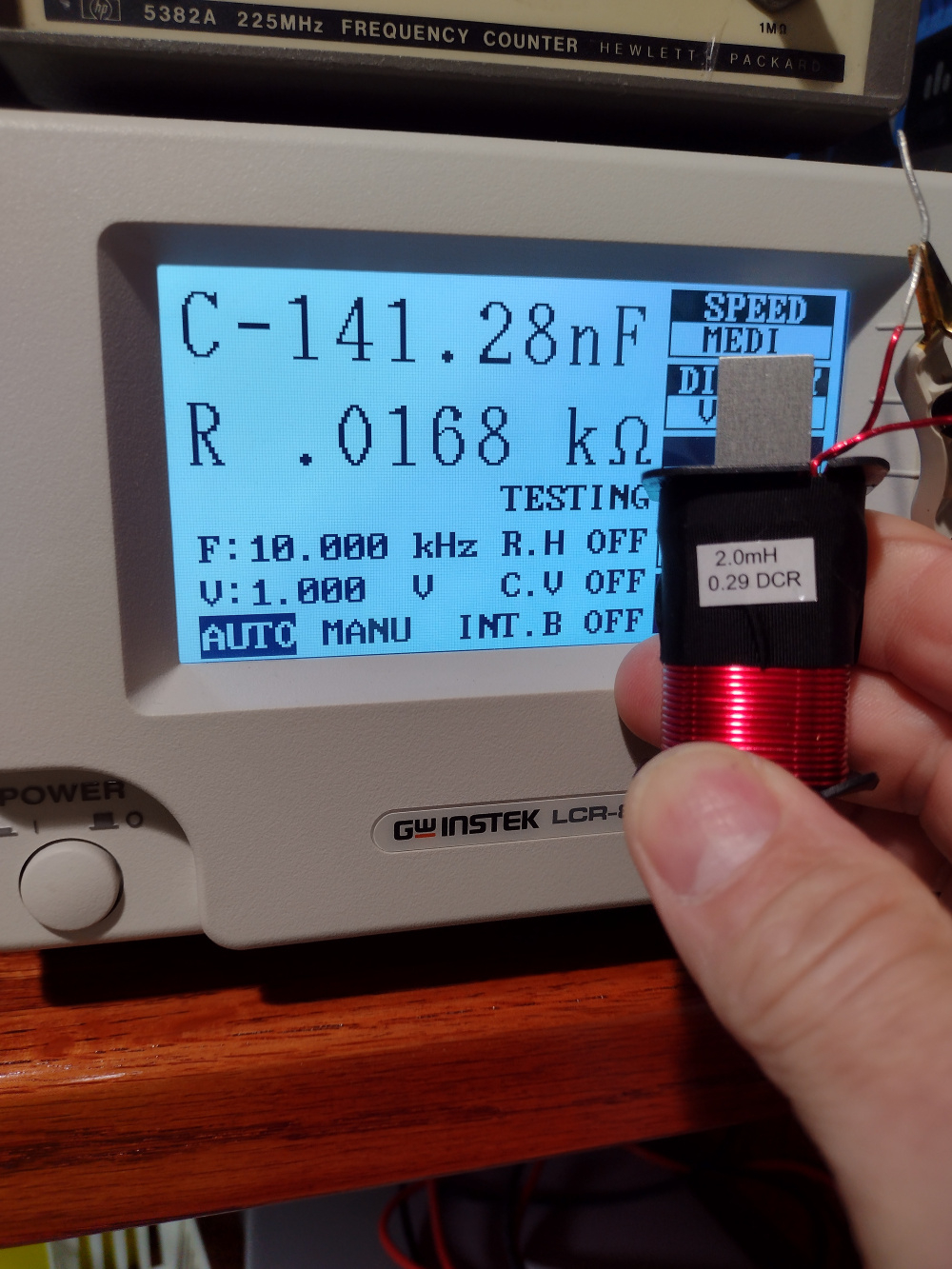
Notice the negative sign next to the C…
Air core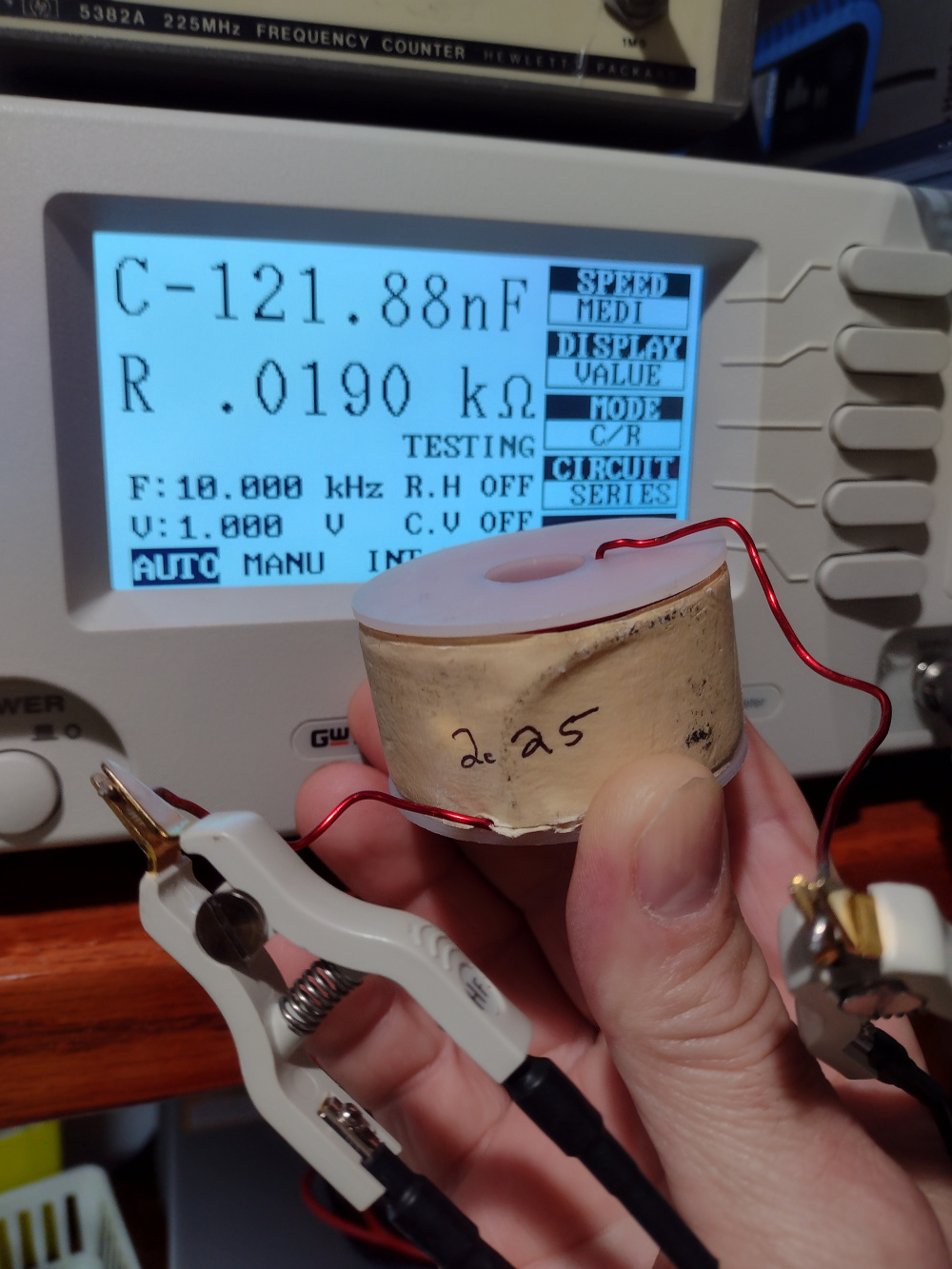
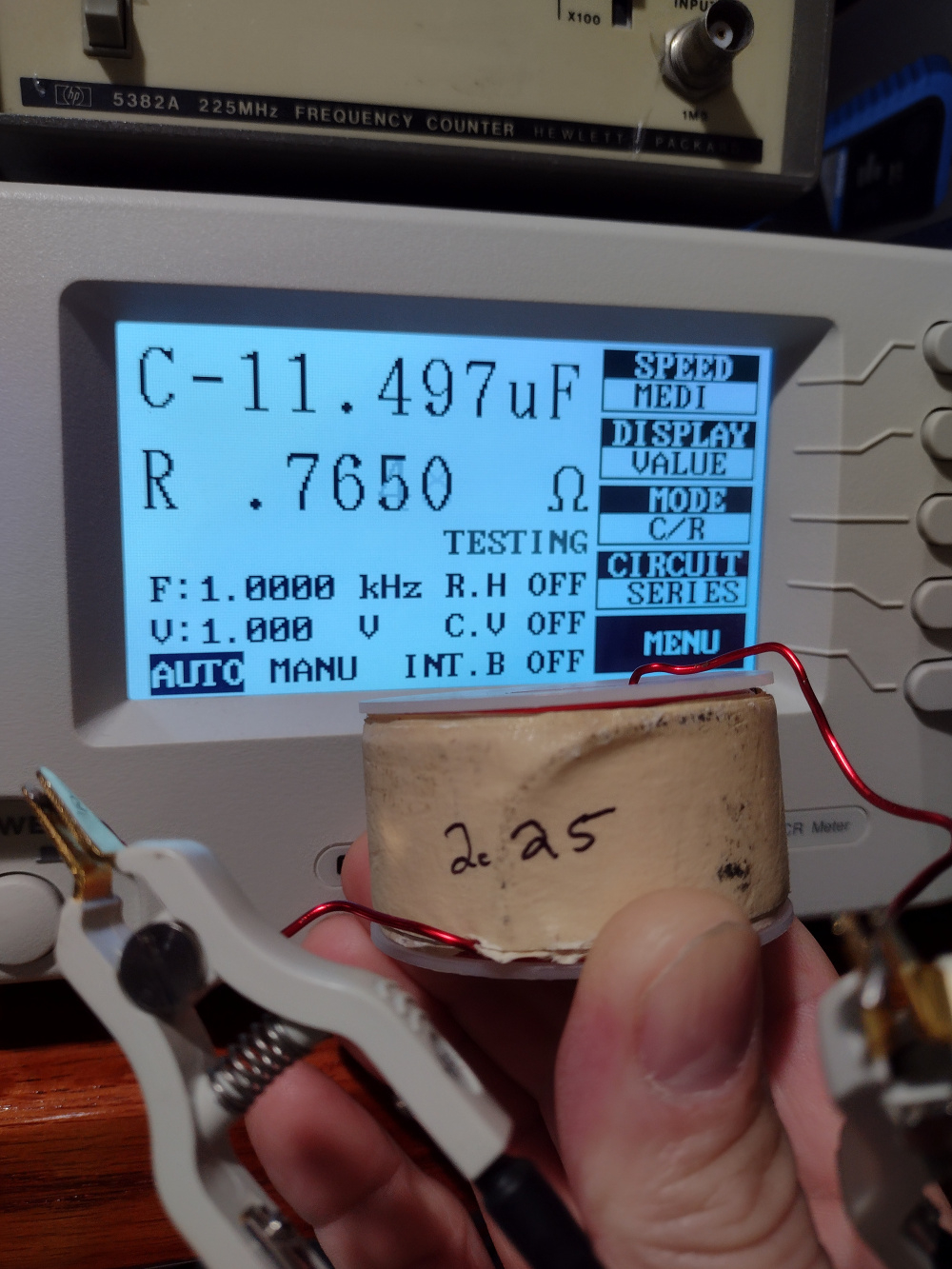
Just to be thorough 100 hz.
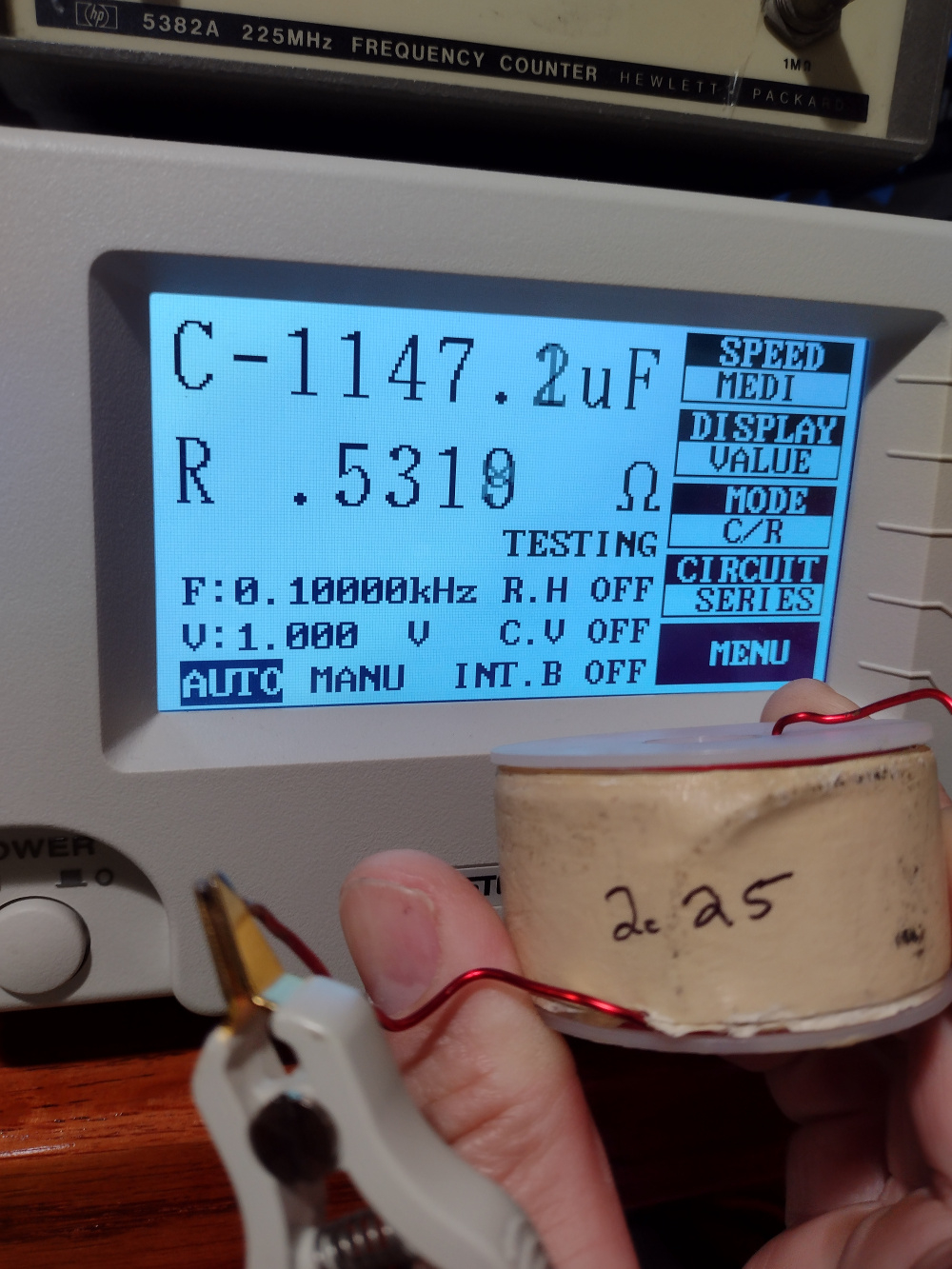
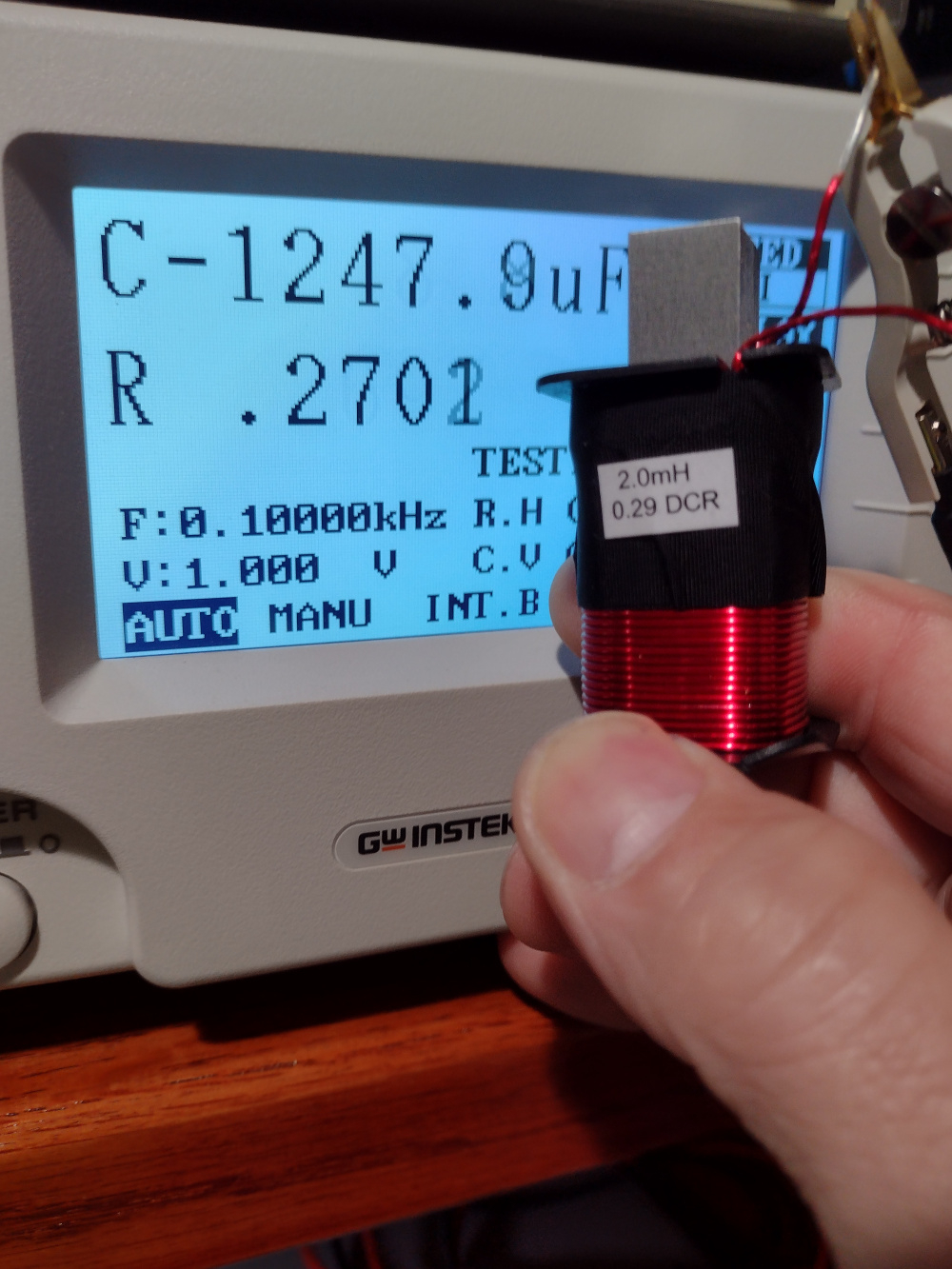
This is not how to measure parasitic capacitance, if that's what you're trying to do. Just wrong use of the meter showing negative capacitance.
Parasitic capacitance is effectively in parallel with the inductance, so it will form a resonant circuit at some very high frequency. You need to measure the impedance of the inductor up to very high frequency to find the self-resonance frequency.
Then its just math. Fsr = 1/ (2pi * sqrt(L*C))
Solve for C = 1 / (L(2pi * Fsr)^2)
Ha! And y'all thought I gave him some homework.
In all seriousness, thanks for doing this. I'm sure we'll learn something in the end. With just those quick comparisons, the foils aren't so bad. I'm guessing once the resonance of each are found, the coil with the highest peak will be the worst?
A cap in parallel with an inductor creates a notch filter. In general, parasitic capacitance is too small of a value to care about for speaker crossovers. It's easy to measure real impedance over frequency, and filter transfer function, that's what really matters.
Decibel is correct, I honestly didn't even think about it. I just put the meter on it. My fault